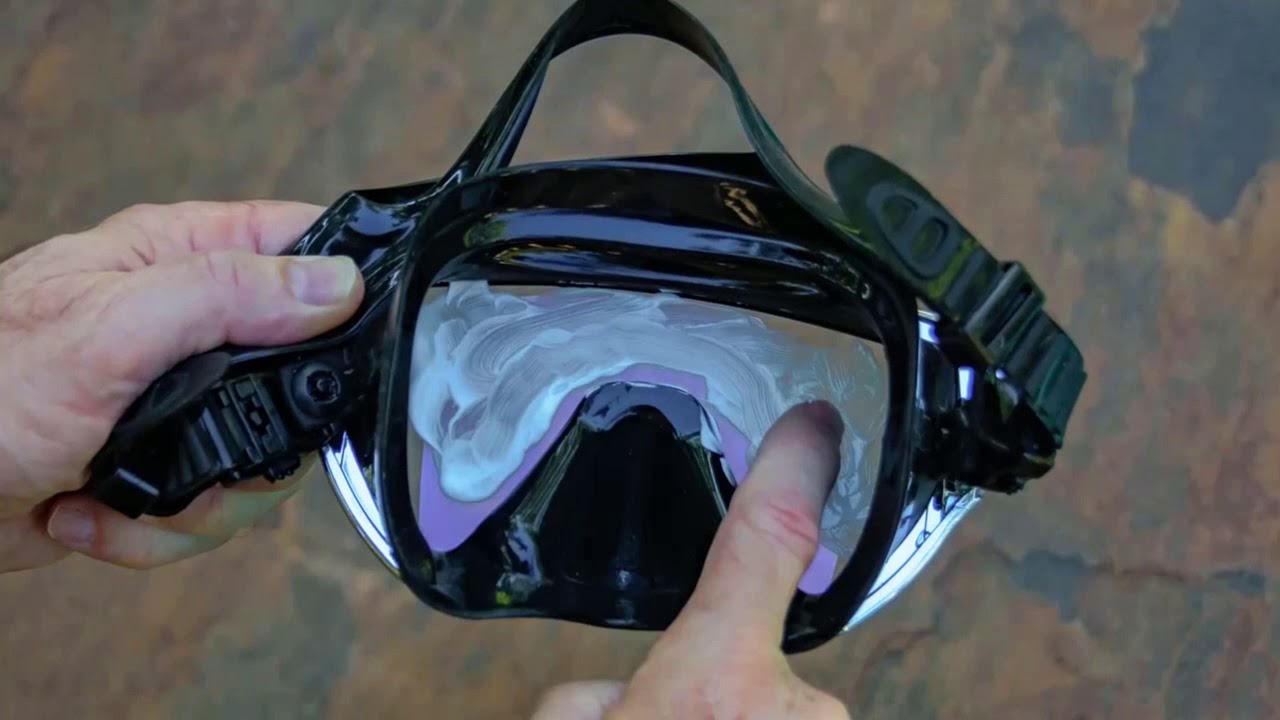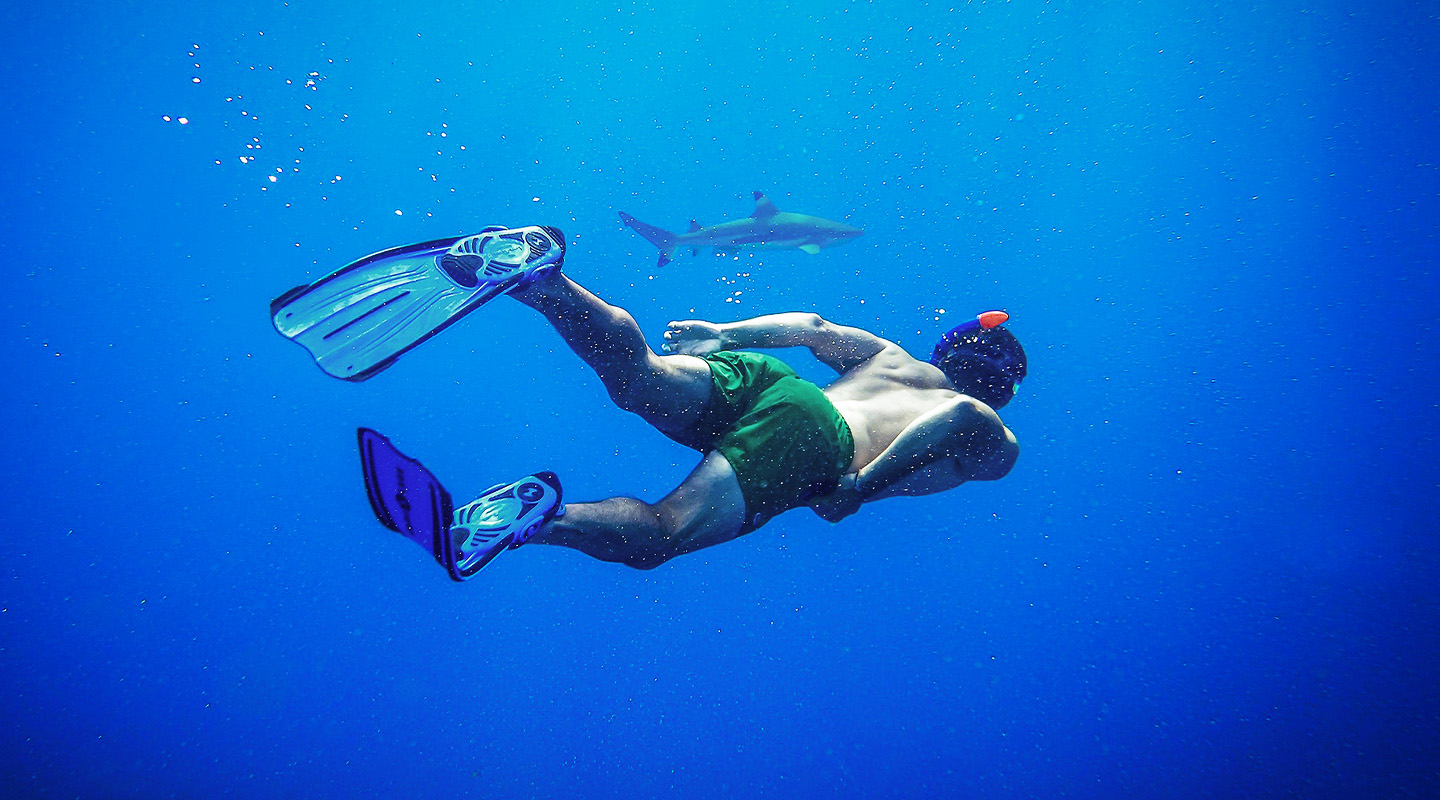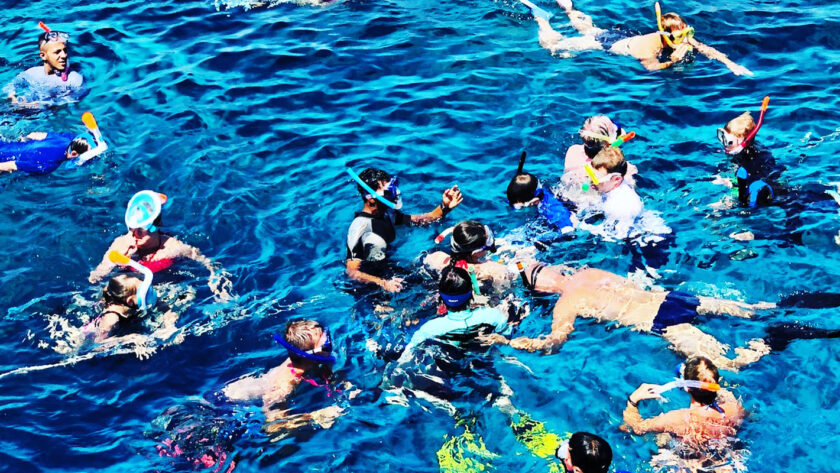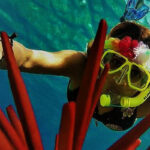Imagine yourself floating effortlessly on the crystal-clear waters of a tropical paradise, immersed in a world teeming with vibrant marine life. Welcome to the Beginner’s Guide to First Time Snorkeling: Must-Know Tips! As a novice snorkeler, embarking on this underwater adventure can be both exciting and daunting. But fear not, because this article is your trusted companion, providing you with essential tips and tricks to make your first snorkeling experience unforgettable. From choosing the right equipment and mastering basic techniques to ensuring your safety in the water, we’ve got you covered every step of the way. So, slip on your snorkel mask, grab your fins, and let’s dive into the magical world beneath the waves!
Choosing the Right Snorkeling Equipment
Selecting the Right Mask
When it comes to snorkeling, having the right mask is crucial for a great experience. Look for a mask that fits your face comfortably, with a snug but not tight seal. The mask should cover your nose and eyes, providing a wide field of vision. Consider purchasing a mask with a silicone skirt, as it provides a superior seal and is more comfortable to wear for extended periods. Additionally, opt for a mask with tempered glass lenses, as they are less likely to fog up and are more resistant to scratches.
Picking the Right Snorkel
Choosing the right snorkel is equally important for a successful snorkeling adventure. Look for a snorkel that has a comfortable mouthpiece that fits securely in your mouth. Some snorkels come with a purge valve, which allows for easy clearing of any water that may enter the snorkel. Consider purchasing a snorkel with a dry top, which helps prevent water from entering the tube while you are submerged. Also, look for a snorkel with a flexible and comfortable snorkel keeper that attaches securely to your mask.
Choosing Fins for Snorkeling
Fins are a key piece of snorkeling equipment that helps you move efficiently through the water. Look for fins that fit comfortably on your feet without causing any discomfort or blisters. Consider the type of fin you prefer – full-foot fins or open-heel fins. Full-foot fins are worn like shoes and provide a snug fit for calm waters and warm climates. Open-heel fins, on the other hand, are worn with neoprene booties and are ideal for colder waters or rougher conditions. Choose fins that have a good balance of flexibility and stiffness to suit your snorkeling style and ability.
Consider Using a Wetsuit
While not essential for every snorkeling adventure, wearing a wetsuit can enhance your comfort and protection in certain conditions. If you plan to snorkel in cooler waters, a wetsuit will help keep you warm by trapping a thin layer of water between your body and the suit, which is then warmed by your body heat. Additionally, a wetsuit provides an extra layer of protection against potential scrapes and cuts from coral or marine life. Look for a wetsuit that fits snugly without being restrictive, and consider the thickness of the suit based on the water temperature you will be snorkeling in.

Preparing for Snorkeling
Conditioning Your Body
Snorkeling can be physically demanding, so it’s essential to condition your body before heading out for an adventure. Strengthening your cardiovascular system through regular exercise, such as swimming or jogging, can improve your endurance in the water. Additionally, focusing on core strength exercises like planks and sit-ups can help stabilize your body while snorkeling. Flexibility exercises, such as yoga or stretching, can also benefit your ability to move comfortably in the water. Remember to start gradually and listen to your body to avoid overexertion.
Checking the Weather and Water Conditions
Before diving into the water, it’s important to check the weather and water conditions to ensure your safety and maximize your snorkeling experience. Strong winds, high waves, or thunderstorms can make snorkeling hazardous, so always choose a day with calm weather. Additionally, clarity of the water is essential for a fulfilling snorkeling experience. Clear water will allow you to see the vibrant underwater environment more clearly. Check local reports or consult with experienced snorkelers to determine the best time and location for optimal visibility and favorable water conditions.
Applying Sunscreen
Sun protection is crucial when spending extended time in the water. Apply a waterproof sunscreen with a high SPF to protect your skin from harmful UV rays while snorkeling. Be sure to cover all exposed areas of skin, including your face, neck, ears, and any other areas not protected by your wetsuit. It’s also important to reapply sunscreen regularly, especially after swimming or toweling off. Opt for reef-safe sunscreen to minimize any harmful impact on the marine environment.
Hydrating Properly
Staying hydrated is essential while snorkeling for an extended period. Remember that being in the water can dehydrate your body, even if you may not feel thirsty. Drink plenty of water before, during, and after your snorkeling session to maintain optimal hydration levels. Avoid consuming alcoholic beverages before or during your snorkeling adventure, as they can dehydrate your body. It’s also a good idea to bring a water bottle with you to ensure you have easy access to hydration while snorkeling.

Getting Familiar with Snorkeling Techniques
Breathing Techniques
Proper breathing techniques are essential for an enjoyable and safe snorkeling experience. Breathe slowly and deeply through your mouth, allowing the air to fill your lungs completely. Relax and focus on controlling your breath to prevent rapid or shallow breathing. Be mindful of your breathing rhythm, as it can affect your buoyancy in the water. Practice slow and controlled breathing to conserve energy and make the most of your time underwater.
Clearing Water from the Snorkel
Water may occasionally enter your snorkel while snorkeling, but it’s important to know how to clear it efficiently. If water enters your snorkel, instead of panicking, follow these steps to clear it: exhale forcefully and sharply through your snorkel while keeping your mouth closed around the mouthpiece. This quick burst of air will cause the water to be forced out of the snorkel tube. Practice this technique in shallow water before venturing into deeper waters to ensure you have mastered it.
Equalizing Ear Pressure
Equalizing your ear pressure is crucial when descending underwater to prevent discomfort or injury. To equalize the pressure in your ears, pinch your nose shut and gently blow air through your nose, applying gentle pressure. This technique helps to open the Eustachian tubes and equalize the pressure. It’s important not to force the equalization process, as it can cause injury or discomfort. If you are unable to equalize, ascend slightly and try again. Mastering this technique will enhance your ability to explore different depths comfortably.
Entering the Water Gracefully
Finding a Suitable Entry Point
Choosing the right entry point can make your snorkeling experience much smoother. Look for a sandy beach or a designated snorkeling entry point that allows easy access to the water. Avoid areas with sharp rocks, strong currents, or steep drop-offs, as they may pose dangers. If possible, choose an entry point with calm and shallow water, especially if you are a beginner. Take your time to assess the entry point and plan your entry accordingly.
Walking into the Water
Once you have found a suitable entry point, it’s time to enter the water. Take it slow and steady, especially if the water is wavy or if you are wearing fins. Start by walking backward into the water, maintaining your balance and stability. Ensure your mask and snorkel are secure before fully submerging yourself. If you feel comfortable, continue to walk until the water is deep enough for you to start floating. Remember to keep an eye on your surroundings and be cautious of any underwater obstructions.
Floating on the Surface
Once you have entered the water, take a moment to adjust and get used to the feeling of floating on the surface. Position your body face-down in the water, with your snorkel above the surface, and kick your fins gently to stay afloat. Relax, breathe slowly and evenly, and take in the beauty of the underwater world beneath you. Remember to stay aware of your surroundings and keep a lookout for any potential hazards or interesting marine life.

Understanding Snorkeling Safety
Buddy System
Snorkeling alone is not recommended, as unexpected situations can arise. It’s always advisable to snorkel with a buddy or a group to ensure maximum safety. Snorkeling with a buddy allows you to keep an eye on each other, signal for help if needed, and share the experience together. Make sure to establish clear communication and establish a plan before entering the water. Keep each other within sight and check on each other periodically to ensure everyone’s well-being.
Knowing Your Limits
Understanding your limits and snorkeling within your comfort zone is crucial for your safety. Be honest with yourself about your swimming ability and fitness level. Avoid venturing too far from shore or beyond your capabilities. It’s important to conserve your energy and not push yourself beyond what you are capable of. If you feel tired or uncomfortable, take a break and rest on the surface. Remember that snorkeling is meant to be enjoyable, so don’t hesitate to adjust your plans according to your comfort level.
Being Aware of Marine Life
While exploring the underwater world is exciting, it’s essential to respect and be aware of the marine life around you. Avoid touching, chasing, or harassing any marine creatures. Maintain a safe distance to prevent unintentional harm to yourself or the animals. Some marine animals may be territorial or sensitive, so it’s best to observe them from afar. Be mindful of where you are swimming and avoid areas known for dangerous marine life, such as jellyfish or stingrays.

Avoiding Touching Coral or Marine Life
Coral reefs are delicate ecosystems that provide a vital habitat for various marine species. It’s crucial to avoid touching or stepping on coral, as it can cause irreparable damage. Coral is fragile and takes years to grow, so even the slightest touch can harm or kill it. Additionally, avoid touching or handling any marine life, including fish, turtles, or other creatures you may encounter. Respect their natural habitat and observe them from a respectful distance to minimize any negative impact on their well-being.
Learning About Snorkeling Etiquette
Respecting the Marine Environment
As a snorkeler, it’s your responsibility to protect and respect the marine environment. Avoid littering or leaving any trash behind, both on land and in the water. Dispose of your waste properly and consider participating in beach cleanup initiatives whenever possible. Be mindful of the impact of your actions on the underwater ecosystem and strive to leave no trace behind.
Keeping a Safe Distance from Marine Life
Maintaining a safe distance from marine life is not only for their safety but also for your own well-being. Some marine animals may exhibit unpredictable behavior, especially if they feel threatened or provoked. Approaching them too closely can lead to accidents or injuries. Admire marine life from a respectful distance, using your snorkeling gear to get a closer look without invading their space. Respect their natural behaviors and avoid any actions that could disrupt their daily routines.
Not Feeding Marine Animals
Feeding marine animals may seem like a way to interact or attract them, but it can have detrimental effects on both their health and the ecosystem. Marine animals have complex diets and feeding them human food can disrupt their natural nutritional balance. Additionally, feeding marine life can alter their behavior and cause dependence on human interaction for food. Avoid feeding marine animals and focus on observing them in their natural habitat without interfering in their natural feeding habits.

This image is the property of pixabay.com.
Exploring Different Snorkeling Locations
Choosing a Suitable Snorkeling Spot
Choosing the right snorkeling spot plays a significant role in the quality of your snorkeling experience. Consider factors such as the visibility of the water, the presence of vibrant marine life, and the level of difficulty the location may present. Some snorkeling spots may require more advanced swimming skills or favorable tide conditions. Research and gather information about the snorkeling sites you are interested in to make an informed decision based on your skill level and preferences.
Researching Local Snorkeling Sites
Before embarking on a snorkeling adventure, take the time to research local snorkeling sites. Local websites, guidebooks, or travel forums can provide valuable information about the best snorkeling spots in the area. Take note of any potential hazards, special rules or regulations, and recommended gear. Reviews and recommendations from experienced snorkelers can also help you discover hidden gems or off-the-beaten-track locations that offer exceptional snorkeling experiences.
Opting for Guided Snorkeling Tours
If you’re new to snorkeling or unfamiliar with the area, opting for guided snorkeling tours can be an excellent option. Guided tours provide you with the expertise of experienced snorkeling professionals who can show you the best snorkeling spots and ensure your safety throughout the excursion. They can provide valuable information about the local marine life, offer guidance on snorkeling techniques, and assist you in case of any emergencies. Guided tours often include necessary equipment, such as masks, snorkels, and fins, making it a convenient option for beginners.
Mastering Basic Snorkeling Skills
Scanning the Ocean Surface
To fully immerse yourself in the underwater world while snorkeling, it’s important to master the skill of scanning the ocean surface. Lift your head occasionally to look around and observe any landmarks on the shore that can help you maintain your position. Pay attention to any potential hazards, such as boats, rocks, or other snorkelers, and adjust your direction accordingly. Scanning the surface regularly will ensure you stay on course and don’t unintentionally stray too far from your starting point.
Practicing Efficient Finning Technique
Efficient finning technique is essential for maneuvering effortlessly through the water while snorkeling. Start by bending your knees slightly to ensure your feet are properly positioned inside the fins. Kick from your hips in a fluid, powerful motion, keeping your legs straight and relaxed. Avoid thrashing or splashing excessively, as it can disturb the marine life and waste your energy. Practice different finning techniques in shallow water to find the most comfortable and efficient technique for your snorkeling style.
Discovering Different Depths
Snorkeling allows you to explore different depths, from the surface to various depths below. Take the time to gradually descend while snorkeling, familiarizing yourself with the changing underwater environment at different depths. Remember to equalize your ears as you descend to prevent discomfort or injury. As you explore different depths, observe how the marine life and coral formations change, providing a diverse snorkeling experience. It’s important to ascend slowly and in a controlled manner to prevent any issues with equalizing or decompression.
Handling Common Snorkeling Challenges
Dealing with Foggy Mask
A foggy mask can be a common annoyance while snorkeling, but it’s a challenge that can be easily overcome. To prevent your mask from fogging up, apply an anti-fog solution or toothpaste to the inside of the lenses before your snorkeling adventure. Rinse the solution off thoroughly before putting on your mask. Another option is to use a defogging spray or even your own saliva to create a thin film on the inside of the lenses, preventing fogging. Taking these preventive measures will ensure clear visibility throughout your snorkeling experience.
Handling Water Leakage
Occasionally, water may leak into your mask or snorkel, causing discomfort and distraction. To address mask leakage, make sure your mask is properly fitted and tightened before entering the water. Adjust the straps to create a comfortable but secure seal around your face. If water still leaks into the mask, try breathing out forcefully through your nose while pressing the mask against your face to expel any trapped water. For snorkel leakage, ensure your snorkel is securely attached to your mask and positioned correctly in your mouth. If water enters the snorkel, use the clearing technique mentioned earlier to remove it.
Clearing a Flooded Snorkel
In some instances, your snorkel may become flooded with water, making it difficult to breathe. If this happens, stay calm and remember the clearing technique mentioned earlier. Exhale forcefully and sharply while keeping your mouth closed around the mouthpiece. This burst of air will clear the water from the snorkel, allowing you to resume breathing normally. Practice this technique beforehand to ensure that you can handle a flooded snorkel effectively and confidently.
Caring for Your Snorkeling Equipment
Rinsing and Drying Equipment
To ensure the longevity of your snorkeling equipment, it’s important to rinse and dry it properly after each use. Rinse your mask, snorkel, and fins with fresh water to remove any salt, sand, or debris. Pay special attention to the mask lenses, ensuring they are free of sunscreen or other residues. After rinsing, allow the equipment to air dry completely before storing it. Avoid exposing the gear to direct sunlight, as it can cause discoloration or damage. Properly rinsing and drying your equipment will prevent corrosion and extend its lifespan.
Properly Storing Your Gear
Proper storage is key to preserving the quality and functionality of your snorkeling equipment. Store your equipment in a cool and dry place, away from direct sunlight or extreme temperatures. Avoid storing the gear in a compressed or folded state, as it can cause damage or deformation. Hang your fins to maintain their shape, and store your mask and snorkel in a protective case or bag to prevent scratches or crushing. Taking the time to store your equipment properly will ensure that it’s in good condition and ready for your next snorkeling adventure.
Performing Regular Maintenance
Regular maintenance of your snorkeling equipment is essential for optimal performance and safety. Inspect the gear regularly for any signs of wear and tear, such as loose straps, cracks, or frayed edges. Replace any damaged or faulty parts promptly to prevent further issues. Additionally, check the condition of the mask’s silicone skirt and the snorkel’s mouthpiece regularly, as they are prone to wear and degradation over time. Performing regular maintenance and addressing any issues promptly will ensure that your equipment remains in good working condition and ready for your next snorkeling escapade.
In conclusion, snorkeling is a fantastic way to explore the underwater world and connect with nature. By choosing the right equipment, preparing adequately, and mastering essential snorkeling skills, you can make the most of your snorkeling adventures. Remember to prioritize safety, respect the marine environment, and embrace the beauty of the underwater world while snorkeling. With proper knowledge and preparation, you can embark on unforgettable snorkeling experiences and create cherished memories in the depths of the ocean. Happy snorkeling!




